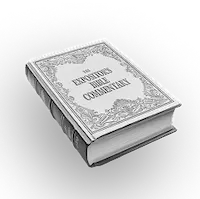Verse of the Day
Author Spotlight
Loading featured author...
Report Issue
See a formatting issue or error?
Let us know →
Verse Takeaways
1
The Abomination of Desolation
Scholars explain this phrase, from the prophet Daniel, refers to a profound desecration of a holy place that is repugnant to God. While it first described an event in 167 B.C., Jesus reapplies it. Commentators see its fulfillment in the Roman armies destroying the Jerusalem temple in A.D. 70, with some also seeing a future fulfillment related to the end times. Mark personifies it as a hostile invader 'standing where he ought not.'
See 3 Verse Takeaways
Book Overview
Mark
Author
Audience
Composition
Teaching Highlights
Outline
+ 5 more
See Overview
Commentaries
5

AT Robertson
On Mark 13:14
Standing where he ought not (εστηκοτα οπου ου δε). Matthew 24:15 has "standing in the holy place" (εστος εν τοπο αγιω),…

Charles Ellicott
On Mark 13:14–23
19th Century
Bishop
But when you shall see.—See Notes on Matthew 24:15-28.
Standing where it ought not.—St. …

Expositor's Bible Commentary
On Mark 13:14–18
(14a) This is one of the most difficult verses in Mark’s gospel if not in the entire NT. The key phrase is “abomination that cause…
Go Ad-Free
Go ad-free and create your own bookmark library

John Gill
On Mark 13:14
17th Century
Pastor
But when you shall see the abomination of desolation
The Roman army encompassing Jerusalem, which was an abomination…

Matthew Henry
On Mark 13:14–23
17th Century
Minister
The Jews, by rebelling against the Romans and persecuting the Christians, hastened their own ruin swiftly. Here we have a prediction of that ruin, …